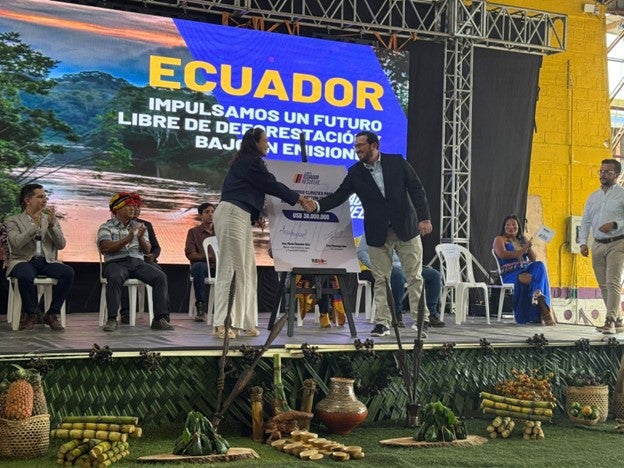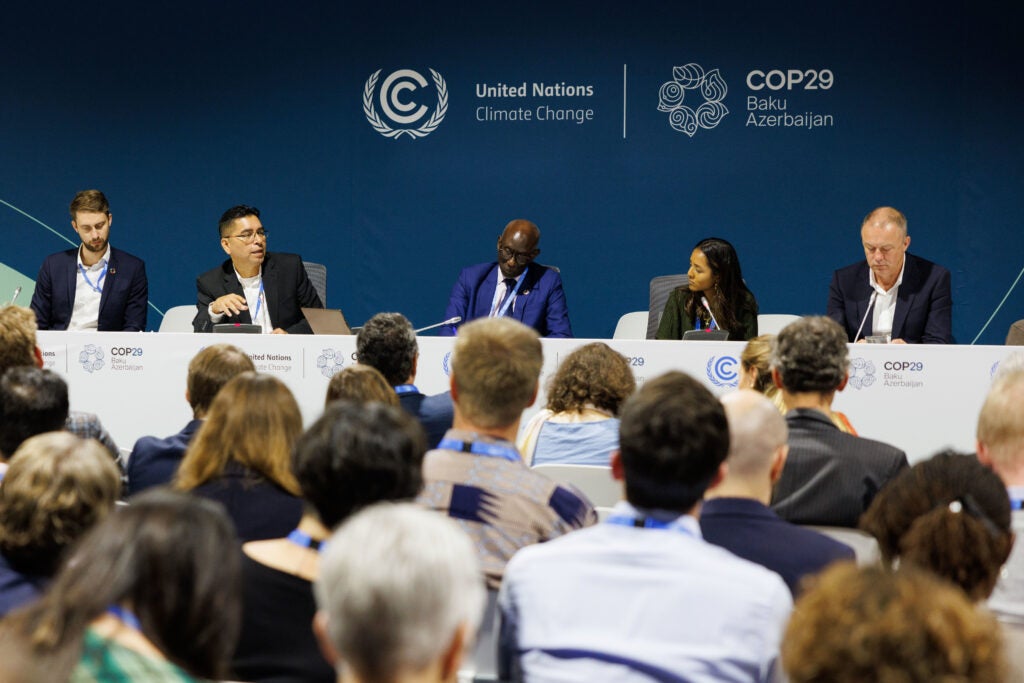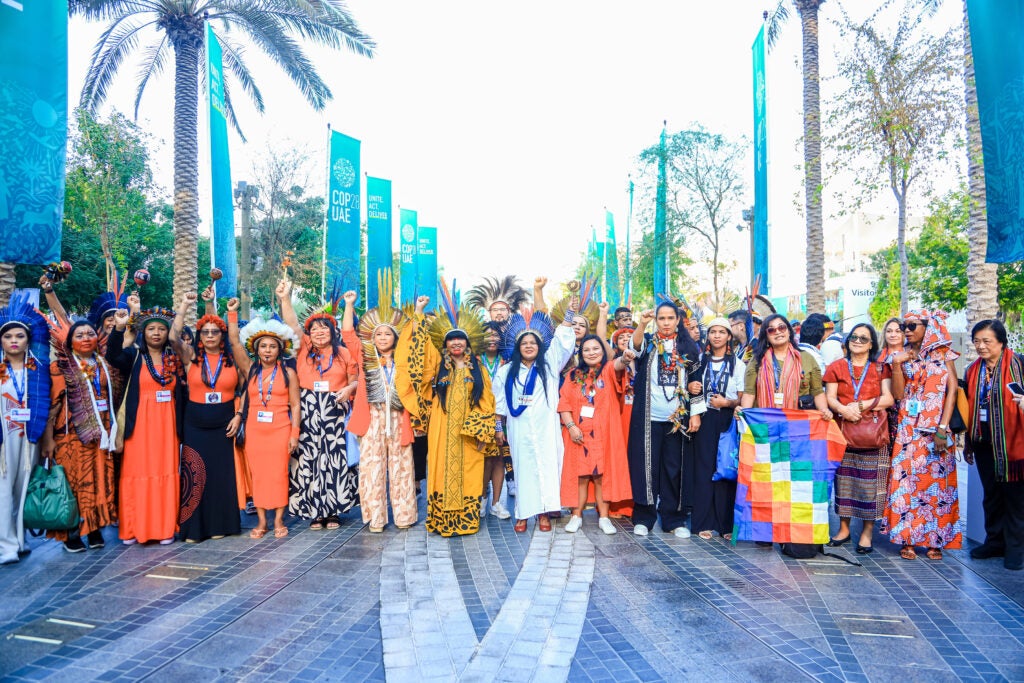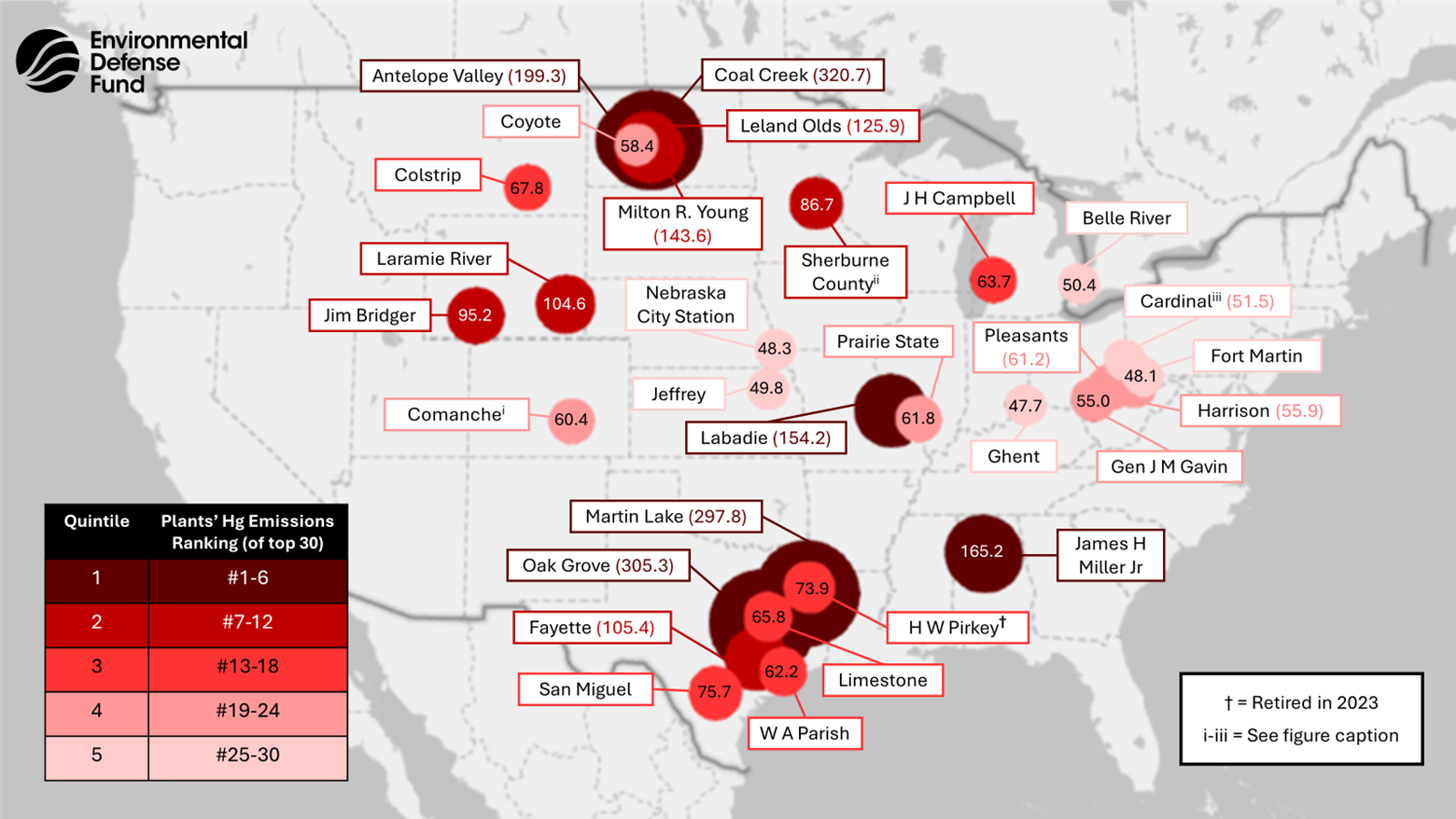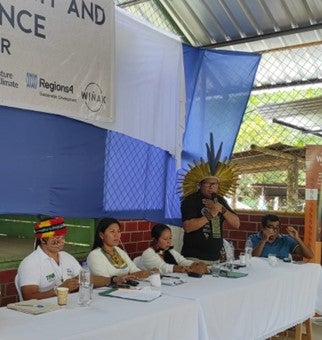
Kleber Karipuna, President of APIB and Coordinator of the Global Alliance, presenting strategies for effective participation at COP30. Photo by Bärbel Henneberger, EDF
By Bärbel Henneberger, Senior Partnerships Manager, Environmental Defense Fund
For Indigenous Peoples and Local Communities (IPLC) organizations of the Americas, 2025 brings fresh expectations. For the first time, the UNFCCC COP30 will take place in the Amazon Basin, hosted by the city of Belém, in the Brazilian state of Pará. This will present a unique opportunity to cast global attention to the challenges and potential solutions unfolding in the wider Amazon region.
For context, the Amazon, the world’s largest rainforest, is also the largest and most vulnerable deforestation front. WWF estimates that 20 percent of its biome has been lost already, and that 27 percent will be without trees by 2030 if the current rate of forest loss continues. For IPLCs, the forest is the home that sustains all life.
Last week, during a workshop on Indigenous economy, Indigenous Peoples and Local Communities (IPLC) organizations from South and Meso America met in the Ecuadorian Amazon to discuss the state of tropical forests and the role of IPLC´s sustainable initiatives. Despite all efforts, illegal timber and gold mining are still powerful drivers of deforestation and the destruction of entire landscapes in the Amazon. However, a call was made for the sustainable use of Nature, and concrete examples were presented of the actions that should be implemented to ensure sustainable forest management. IPLC organizations also agreed that Indigenous bioeconomy will be a key topic to be presented at COP30.










